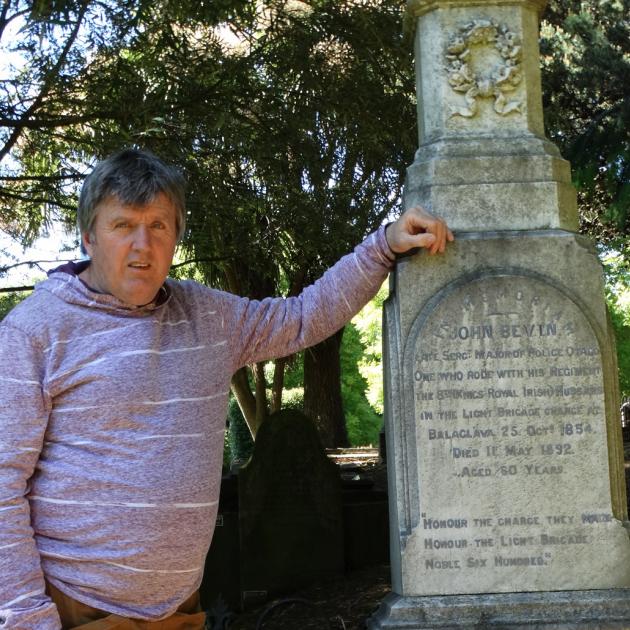
Dunedin military historian Peter Trevathan, who has uncovered fascinating local history through researching graves in the city's Northern Cemetery, is about to cast his net wider in pursuit of the military exploits of some of Dunedin's early residents.
Mr Trevathan recently worked with the Southern Heritage Trust to complete a cemetery trail involving World War 1 graves and memorials in the Northern Cemetery.
Now, two graves in the Southern Cemetery, those of Duncan Gordon Boyes and John Bevin, and one in the Northern Cemetery, that of Sydney Herbert Davies, have caught his eye as having interesting histories dating back still further, as far as the earliest days of the Dunedin settlement.
Born in the 1840s, Boyes was an ensign in the Royal Navy and won the Victoria Cross at the age of just 17 for heroic action during a battle in Japan in the 1860s.
When the soldier carrying the "colours'' (the regimental flag) was killed, Boyes picked it up and continued the charge in the face of heavy fire.
"After winning the VC, he came to New Zealand, and then very quickly fell apart, becoming depressed and alcoholic,'' Mr Trevathan said.
With plans to work on his brother's farm, near Queenstown, Boyes instead stayed at Dunedin's original Criterion Hotel, and sadly took his own life in 1869, aged 22. He was buried with full military honours in the Southern Cemetery, and his remains were later shifted to the Andersons Bay Cemetery.
"It was a very sad story,'' Mr Trevathan said.
A memorial to Boyes and his achievement remains in the Southern Cemetery, although it is in poor condition.
Mr Trevathan is keen to clean up the grave and is applying for a grant to install a sign at the memorial site with a picture of Boyes and a description of how he won the rare medal.
Also in the Southern Cemetery, the grave of John Bevin marks a remarkable military history.
Bevin was with the 8th Kings Royal Irish Hussars at the battle of Balaclava on October 25, 1854, where he was part of the doomed Charge of the Light Brigade. He was wounded and taken prisoner by the Russians.
After being freed as part of a prisoner exchange, Bevin emigrated to Dunedin, where he became a member of the police constabulary, rising to the rank of sergeant major.
He died while on duty at his police station in May, 1892, aged 60, and was buried in the Southern Cemetery with full military honours.
"Everyone knows about the Charge of the Light Brigade; it's a great story,'' Mr Trevathan said.
He hopes to also obtain funding to clean up the sign and for a sign telling Bevin's remarkable story.
Buried in the Northern Cemetery, Sydney Herbert Davies was an ensign in the Royal Navy, who served in the Crimea in the 1850s, before leaving the navy and joining the "16th Foot'' and being sent to Canada in the 1860s at the time of the American Civil War.
He resigned from the British Army and joined the American Confederate Army in the South, becoming a drill instructor and taking part in the famous Picket's Charge at Gettysburg.
After leaving the United States and emigrating to New Zealand, he joined the New Zealand Armed Constabulary.
He was awarded the New Zealand War Medal in 1873.
"I'm really keen to find out as much information as I can on all of these guys, so I would really like to make contact with their descendants if I can,'' Mr Trevathan said.
•To make contact with Peter Trevathan, phone (027) 501-8224, or email petebond058@hotmail.co.nz
BRENDA.HARWOOD @thestar.co.nz












